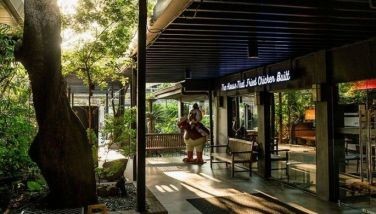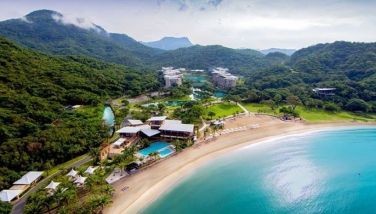Inhibit

What should a petitioner do to convince a judge to inhibit from a case? There are no clear rules, it seems, that plaintiffs or defendants may refer to. It is entirely up to the judge to make that judgment.
In most instances, the predicament is akin to asking the dynasts in Congress to pass a law forbidding political dynasties.
Most of us, by now, are familiar with the high-profile domestic dispute between former Ambassador Francisco “Paqui” Ortigas III and his estranged wife Susana Madrigal Bayot-Ortigas. The dispute is now the subject of two court proceedings.
On January 26, 2012, Ambassador Ortigas filed a Petition for Nullity in San Juan. Branch 162 of the municipal court served a summons on Susana on February 1, 2012.
On March 19, 2012, Susana Ortigas filed a separate Petition for Legal Separation in Makati. The petition included an application for provisional remedies including a plea for the court to appoint her administrator of the conjugal partnership during pendency of the case. It likewise asked the court to issue a Temporary Protection Order to keep the Ambassador away from the conjugal home.
In a separate petition for indirect contempt, the Ambassador accused his estranged wife for forum shopping, arguing that the Makati court had no jurisdiction over the case. The couple’s conjugal home is in San Juan and the court hearing the petition for nullity earlier acquired jurisdiction over the case. That petition is now with another court in San Juan.
This is not the most pressing issue for Ambassador Ortigas, however. His estranged wife’s petition for separation was raffled off to a vacant court, Makati RTC Branch 144. That particular court was eventually filled with the appointment of Judge Liza Marie Picardal-Tecson. Judge Tecson immediately ruled that her court had jurisdiction over the legal separation case, preempting the San Juan court. A motion for reconsideration was filed.
The Ambassador’s camp is suspicious about the appointment of Judge Tecson to the vacant court assigned to hear his estranged wife’s petition. He has filed a motion for Tecson to inhibit from the case, pointing out that the judge’s husband used to be with the firm handling Susana Ortigas’ cases. The judge’s husband is, in fact, a friend of Susana’s lawyer.
Ambassador Ortigas likewise complained that Susana’s side was given more generous leeway to file comments on his motions. At any rate, on October 15 Judge Tecson issued an omnibus order denying both Paqui Ortigas’ motion for reconsideration as well as his motion for the judge to inhibit.
The judge had ruled she would not inhibit. Ambassador Ortigas’ only recourse now, whatever his discomfort about the court’s impartiality, is to argue his own motion to dismiss the case based on its own infirmities.
Defiant
If Judge Tecson’s court seems impervious to the discomforts of one party to the case, the Manila trial court handling the case against Manila Harbor Center Industrial Park, Inc. (MHCIPI) appears to be in need of some help.
Last week, traffic was snarled in the Harbor Center area when security guards of R-II Builders Inc. prevented the enforcement of the Manila court’s order. Judge Lyhila Abella Aquino, in the aftermath of the ugly confrontation at the Harbor Center last week, cited officials of the MHCIPI in contempt and asked the PNP “to assist the sheriffs in implementing (its) order to prevent any untoward incidents.”
Actual ownership of the Harbor Center facility has been the subject of contentious litigation for years between the government-owned Home Guaranty Corporation (HGC) and R-II Builders. The legal tussle is an off-shoot of the failed joint venture between the National Housing Authority and R-II Builders to build socialized housing at the old Smokey Mountain dumpsite.
In that joint venture arrangement, R-II was supposed to fund the entire cost of the project. Government, in the end, underwrote the major cost for seeing it through. In the failed arrangement, R-II was to recover its housing investment by way of shares in Harbor Center. Since the volume of investments were not actually made, government sought to recover its shares in the port facility.
HGC president Manuel Sanchez says his agency owns 60% of Harbor Center. R-II refuses to recognize this claim. In June 2011, the Supreme Court ruled in HGC’s favor. Since then, however, the government agency could not take physical control of the facility. Instead, says Sanchez, the facility has been rented out by R-II for questionable activities such as the stockpiling of coal. R-II, in defiance of the court decisions, persisted in collecting rent and association dues from locators in the facility.
In what other country are court orders so flagrantly defied and sheriffs so blatantly ignored?
We will see this week if the Republic of the Philippine still has jurisdiction over that 79-hectare Harbor Center facility. The Manila court tasked with executing the judicial rulings on the ownership of this facility has ordered its sheriffs “to break open any gates that will prevent the locators and their personnel and security from entering and exiting the subject property.”
Should R-II Builders choose to defy judicial rulings on who actually owns the place, there will be trouble at the ports. The HGC is not about to be bullied into inaction. There is much at stake here in the form of income from leases due government, much more in terms of what to do with this valuable facility.
Much more important: if government itself cannot enforce its property rights, what else can it enforce?
- Latest
- Trending





















